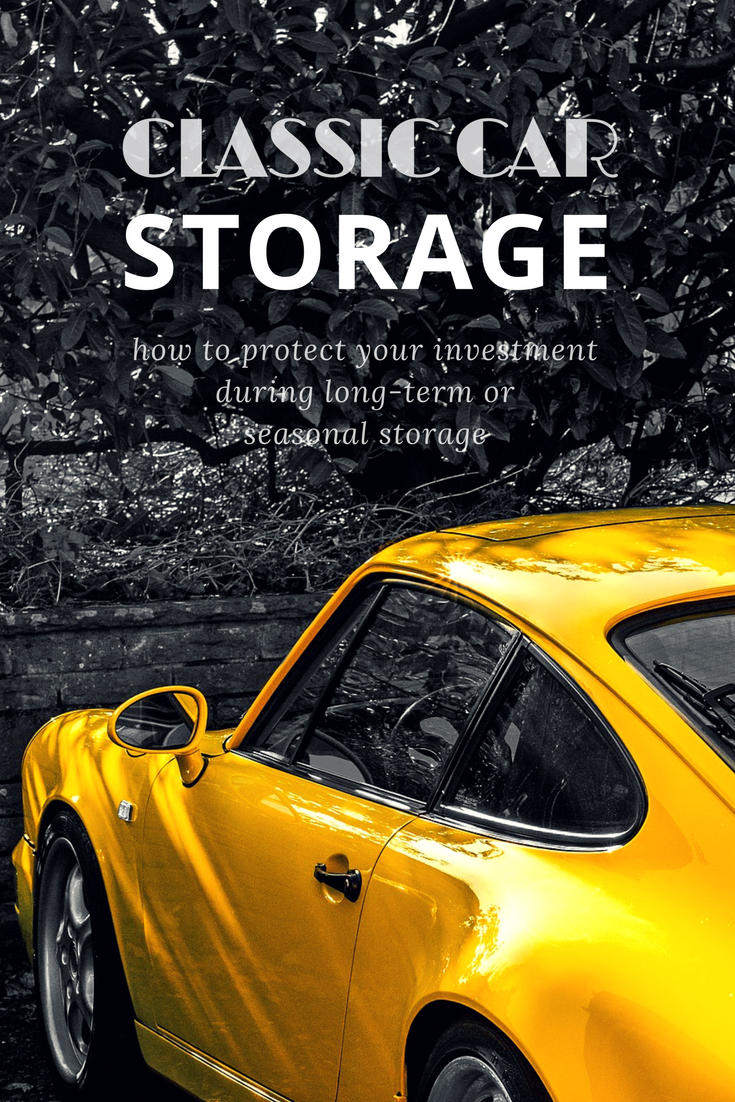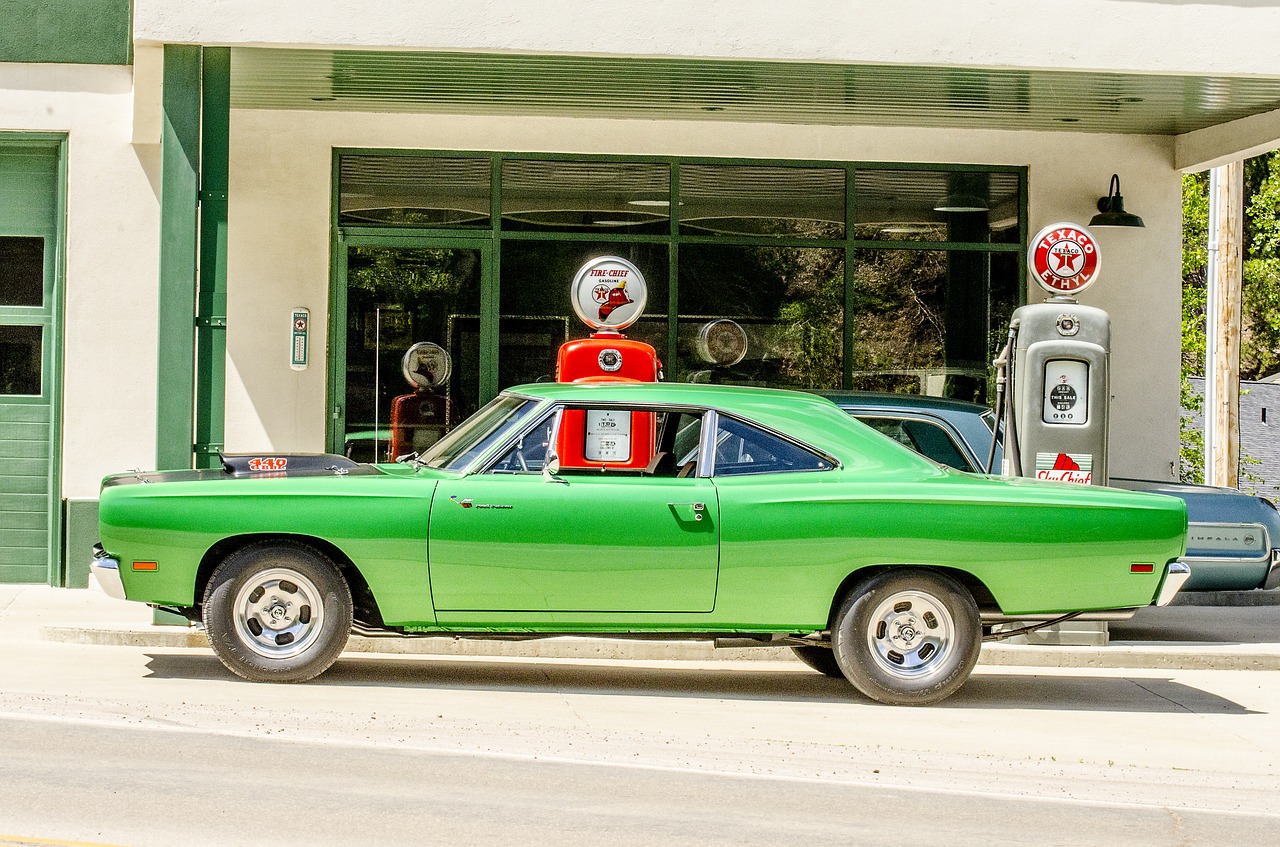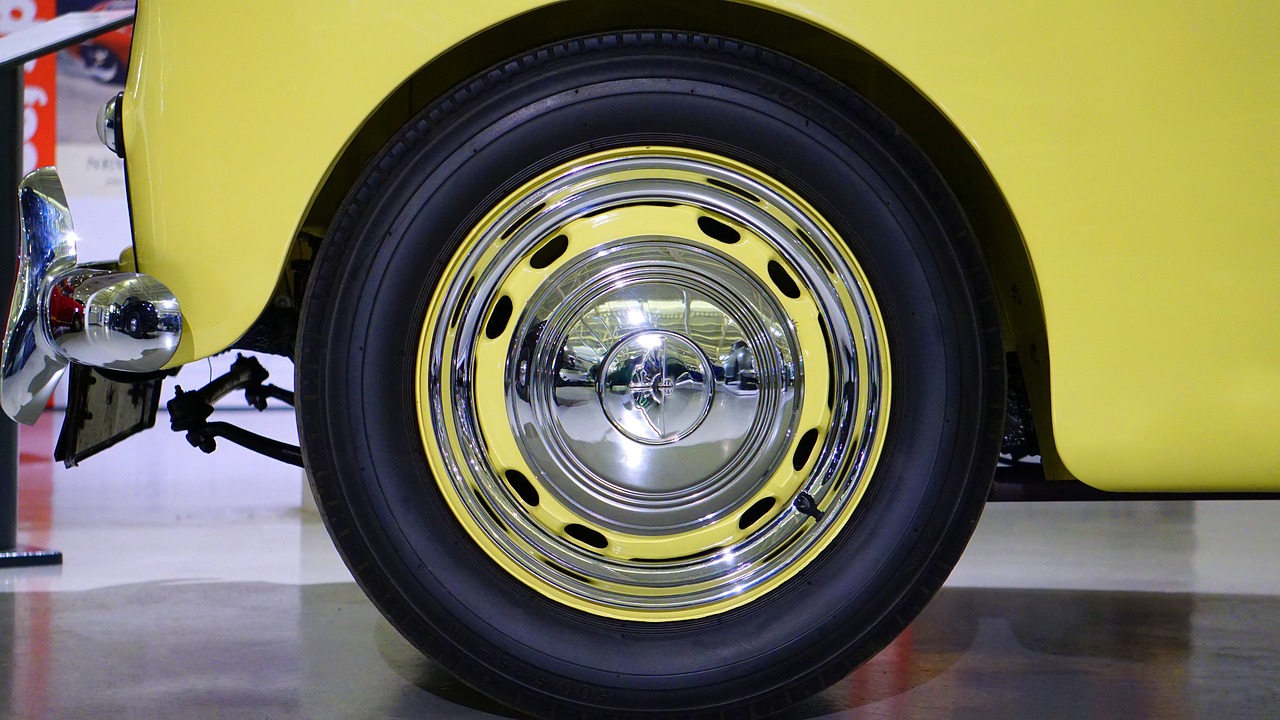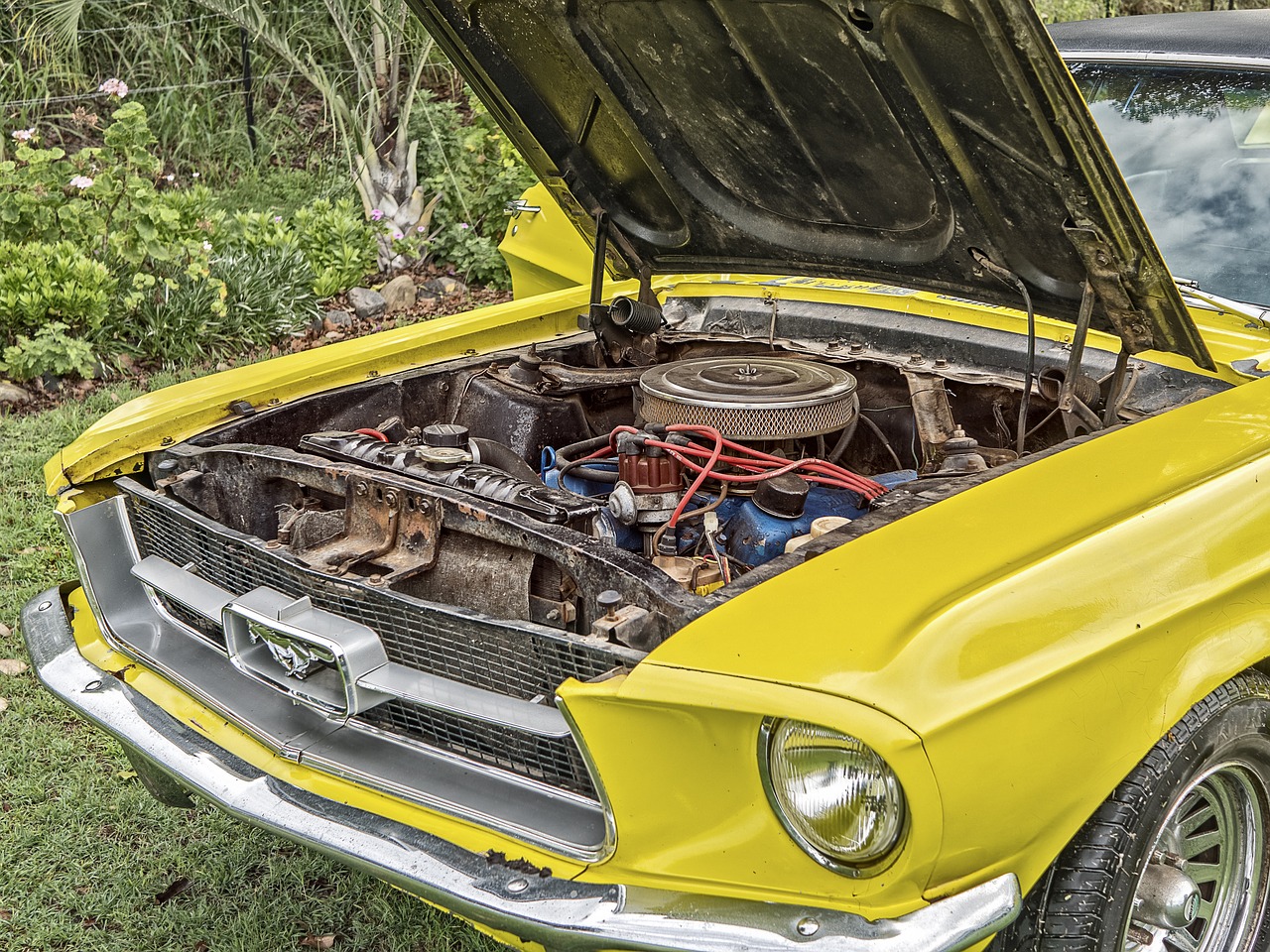Updated 4/20/17 from an article originally published 8/30/2013.

Classic cars aren’t always practical. A classic car is an investment — one that you want to keep in the best condition possible. This could mean storing your joy ride away for the winter or longer if needed.
Investing in seasonal or long-term car storage is an affordable way to protect your automotive labor of love if you know how to do it right.
It might seem easy and convenient enough to drive your car into storage and leave it, but even older cars are meant to be driven. Storing your classic car for more than a month without proper prep can have a detrimental impact on the integrity of the car and motor.
Make sure you aren’t unintentionally damaging your car with these five must-know tips for classic car storage.
Prior to Storing a Classic Car
1. Fill the Tank & Change the Oil

Fill the tank with premium gasoline and add a fuel stabilizer per the manufacturer’s instructions. The fuller the tank, the less chance excess moisture will build up in open spaces, which can cause the tank to rust.
The fuel stabilizer will prevent the fuel from hardening and gunking up. Make sure you drive the car around for a few miles after adding the stabilizer so it can work itself throughout the system, then top the tank off before leaving in storage.
Along with fresh gasoline, make sure the oil has been changed and the oil filter has been replaced. Leaving dirty, old oil in your classic car can lead to premature rusting within the engine. Remember to drive the car a few miles immediately following the oil change.
In addition to an oil change and refueling, remove the spark plugs and lubricate the cylinders before long term storage. You can replace the spark plugs after lubricating the cylinders or keep them in a safe place if you don’t want anyone taking your car for a joyride while it’s in storage.
2. Get the Car Detailed & Prepped

This step may seem unnecessary and counter-intuitive, but it’s important to store a clean and waxed car. Any dust or debris left on the car in storage can scratch or damage the exterior paint. Interior dirt and crumbs can attract unwanted pests and create undesirable odors. Before storing your classic car, give it a good, thorough cleaning and apply a protective wax finish on the exterior.
After the car wash, prep your classic car even further by doing the following:
- Add a box of baking soda to the interior of the car to absorb unwanted smells.
- Block off the exhaust using steel wool or aluminum foil to deter pests.
- Lubricate door and hood hinges to keep them from jamming up.
- Don’t forget the wheels! Make sure they are cleaned and dressed before storage.
- Use a breathable cloth car cover instead of plastic. Plastic covers can trap condensation and lead to rust.
3. Fill Tires with Air & Put the Car on Jacks

It’s important to properly maintain your tires in storage because they can be very expensive to replace. First, fill up your tires to the maximum suggested PSI. Then, if you don’t plan on driving the car for awhile, jack the car up using jack stands. This relieves the weight from the tires and suspension. The added support will also prevent tires from flat spotting.
Quick Tip: If you’re storing your car on a dirt or stone surface, be sure to add plywood or another hard surface below the tires. This will protect the tires from ground rot.
4. Address the Car Battery & Fluids

If you plan on storing your classic car long-term, remove the car battery entirely. If the battery terminal is corroded, carefully clean it with a mixture of baking soda, petroleum jelly, and distilled water. Store the battery off the ground in a climate controlled environment above freezing.
If you will be starting your car every now and then, consider a battery tender (or trickle charger) to keep the battery functioning over long periods of time. This option will only work if you have a power source in your storage area.
Do a quick inspection right before storage and make sure all the fluids are topped off, including antifreeze, brake fluid, and transmission fluid.
5. Choose the Right Storage Location

Under ideal circumstances, a classic car should be stored in a clean, dark, and dry space. While it may be tempting to keep your car stored in an inexpensive old barn, the dirt floor and light exposure can be damaging. A garage attached to your home isn’t ideal either because the constant access exposes your car to the elements.
Life Storage offers a variety of vehicle storage options for rent that provide you with everything you need to keep your classic car in pristine condition. At a minimum you would need to look at prices for a 10×15 unit, or the cost of renting a 10×20 storage unit for a bit more room. Find monthly self storage rentals near you!
We hope these tips helped inspire you to store your car properly. If you are lucky enough to own a classic car, make sure you take the best possible care of your investment.






